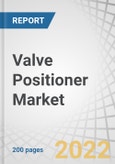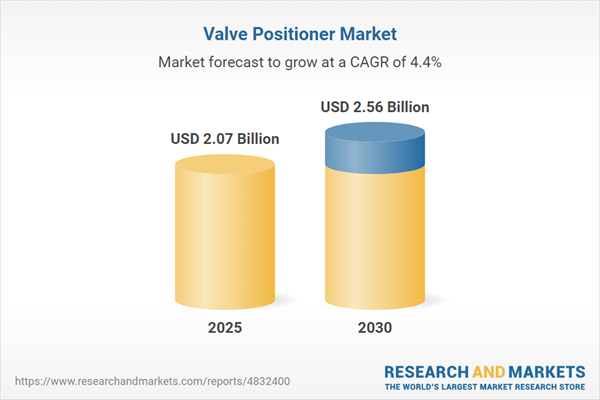Industries such as metals and mining, chemical processing, pharmaceuticals, and power generation are expanding the use of advanced valve positioners to ensure tight control in pressure-sensitive and mission-critical applications. Additionally, manufacturing environments with frequent batch changes and variable flows adopt positioners to improve throughput and reduce waste. Integration with smart instrumentation networks, condition monitoring systems, and plant control architectures enhances operational flexibility and reduces manual intervention. As the demand for adaptive control, remote performance optimization, and lifecycle efficiency increases, valve positioners are expected to play a growing role in enabling next-generation industrial automation strategies across global sectors.
By actuation type, the single-acting segment is expected to hold the largest market share during the forecast period.
The single-acting actuation segment is projected to hold the largest share of the valve positioner market during the forecast period, driven by its growing adoption in critical process industries that prioritize safety, reliability, and energy efficiency. Industries such as oil & gas, water & wastewater treatment, and chemical processing are increasingly selecting single-acting actuators due to their fail-safe capability - automatically returning the valve to a predetermined position (open or closed) in the event of air failure. This functionality ensures operational security and minimizes risks in high-stakes environments.The integration of digital valve positioners with single-acting actuators is further strengthening the segment's dominance, enabling precise control, real-time diagnostics, and predictive maintenance. These benefits not only enhance system performance but also reduce downtime and maintenance costs. Moreover, single-acting actuators consume less air and are easier to install, making them well-suited for remote or hazardous locations where simplicity and reliability are essential. As industries aim to streamline operations and align with sustainability goals, single-acting actuation offers a robust, cost-effective solution that supports compliance and operational continuity, reinforcing its leading position in the market.
Industry
By industry, the energy and power sector is likely to hold the second-largest market share during the forecast period.
The energy and power sector secured the second-largest share in the valve positioner market during 2024, supported by the growing demand for efficient flow control and enhanced system reliability in power generation and distribution. As global energy consumption rises and power grids become more complex, utilities are increasingly implementing advanced valve positioners to optimize control over steam, gas, and cooling systems in thermal, nuclear, and renewable energy plants. Modern power facilities are adopting smart valve positioners to enable tighter control loops, reduce mechanical stress on equipment, and improve load management.The transition toward renewable energy sources - such as biomass, solar thermal, and geothermal - further strengthens the need for accurate flow regulation, making valve positioners a critical component in ensuring process stability and efficiency. Moreover, ongoing efforts to upgrade aging power infrastructure and add new generation capacity worldwide are driving the adoption of these solutions. Valve positioners also support emission control and help meet stringent energy efficiency regulations, reinforcing their role as an essential technology in the evolving energy landscape.
By Region, Asia Pacific is projected to be the fastest-growing market during the forecast period.
Asia Pacific is projected to be the fastest-growing region in the valve positioner market, registering the highest CAGR during the forecast period. This rapid growth is driven by expanding industrialization, infrastructure development, and increasing adoption of automation technologies across key sectors such as oil & gas, chemicals, water and wastewater treatment, and power generation. Countries like China, India, South Korea, and Southeast Asian nations are making significant investments in modernizing their manufacturing and process industries to enhance productivity and meet rising domestic and export demands.The region's push toward Industry 4.0 and smart manufacturing is accelerating the deployment of digital valve positioners, which offer benefits such as precise control, remote diagnostics, and system integration. Moreover, government initiatives supporting clean energy, efficient water management, and industrial automation are creating a favorable environment for market expansion. The need to upgrade aging infrastructure and meet stricter environmental regulations further fuels demand for advanced valve control solutions. With growing focus on energy efficiency, sustainability, and operational reliability, the Asia Pacific is emerging as a key hub for valve positioner adoption, driving its position as the most dynamic and rapidly advancing regional market.
Breakdown of primaries
A variety of executives from key organizations operating in the valve positioner market were interviewed in-depth, including CEOs, marketing directors, and innovation and technology directors.- By Company Type: Tier 1 - 45%, Tier 2 - 35%, and Tier 3 - 20%
- By Designation: Directors - 45%, C-level - 30%, and Others - 25%
- By Region: North America - 45%, Europe - 25%, Asia Pacific - 20%, and RoW - 10%
Major players profiled in this report are as follows:
Emerson Electric Co. (US), Siemens (Germany), ABB (Switzerland), Flowserve Corporation (US), Schneider Electric (France), SMC Corporation (Japan), Azbil Corporation (Japan), Baker Hughes (US), Rotork plc (UK), Valmet (Finland), samsoncontrols.net. (Germany), VRG Controls, LLC (US), Festo SE & Co. KG (Festo) (Germany), Badger Meter, Inc. (US), ControlAir (US), Crane Company (US), Christian Bürkert GmbH & Co. KG (Germany), GEMÜ Group (Germany), Dwyer Instruments, LLC (US), VRC (US), POWER GENEX (South Korea), Val Controls (Denmark), Bray International (US), NIHON KOSO CO., LTD. (Japan), Spirax Sarco Limited (UK).The study provides a detailed competitive analysis of these key players in the valve positioner market, presenting their company profiles, most recent developments, and key market strategies.
Study Coverage
In this report, the valve positioner market has been segmented based on type, actuation, industry, and region. The type segment includes digital, electro-pneumatic, and pneumatic. The actuation segment comprises single-acting and double-acting. The industry segment comprises oil & gas, energy & power, water & wastewater treatment, food & beverages, metals & mining, chemicals, pharmaceuticals, pulp & paper, and other industries. The market has been segmented into four regions - North America, Asia Pacific, Europe, and Rest of the World (RoW).Reasons to buy the report
The report will help the leaders/new entrants in this market with information on the closest approximations of the revenue numbers for the overall market and the sub-segments. This report will help stakeholders understand the competitive landscape and gain more insights to position their businesses better and plan suitable go-to-market strategies. The report also helps stakeholders understand the valve positioner market's pulse and provides information on key market drivers, restraints, challenges, and opportunities.Key Benefits of Buying the Report
- Analysis of key drivers (growing significance of monitoring and control in process industries for optimized output, valve positioners are helping industries cut energy costs and improve efficiency as global energy demand continues to rise, rising adoption of smart valve positioners in various plant operations), restraints (fast-changing technology are slowing the adoption of valve positioners), opportunities (increasing focus on remote operations and decentralized plants, focus of industry players on offering improved customer service), and challenges (positioner overshoot and oversized valves hinder operation of control valves) influencing the growth of the valve positioner market.
- Product Development/Innovation: Detailed insights on upcoming technologies, research and development activities, and new product launches in the valve positioner market.
- Market Development: Comprehensive information about lucrative markets - the report analyses the valve positioner market across varied regions.
- Market Diversification: Exhaustive information about new products/services, untapped geographies, recent developments, and investments in the valve positioner market.
- Competitive Assessment: In-depth assessment of market shares, growth strategies, and service offerings of leading players like Emerson Electric Co. (US), ABB (Switzerland), Siemens (Germany), Flowserve Corporation (US), Schneider Electric (France), and others.
Table of Contents
Companies Mentioned
- Emerson Electric Co.
- ABB
- Flowserve Corporation
- Siemens
- Schneider Electric
- Smc Corporation
- Azbil Corporation
- Baker Hughes
- Rotork PLC
- Valmet
- Samsoncontrols.Net.
- Vrg Controls, LLC
- Festo SE & Co. KG (Festo)
- Badger Meter, Inc.
- Controlair
- Crane Company
- Christian Bürkert GmbH & Co. KG
- Gemu Group
- Dwyer Instruments Ltd.
- Vrc
- Power-Genex Ltd.
- Val Controls
- Bray International
- Nihon Koso Co. Ltd.
- Spirax Sarco Limited
Table Information
| Report Attribute | Details |
|---|---|
| No. of Pages | 218 |
| Published | August 2025 |
| Forecast Period | 2025 - 2030 |
| Estimated Market Value ( USD | $ 2.07 Billion |
| Forecasted Market Value ( USD | $ 2.56 Billion |
| Compound Annual Growth Rate | 4.4% |
| Regions Covered | Global |
| No. of Companies Mentioned | 25 |









